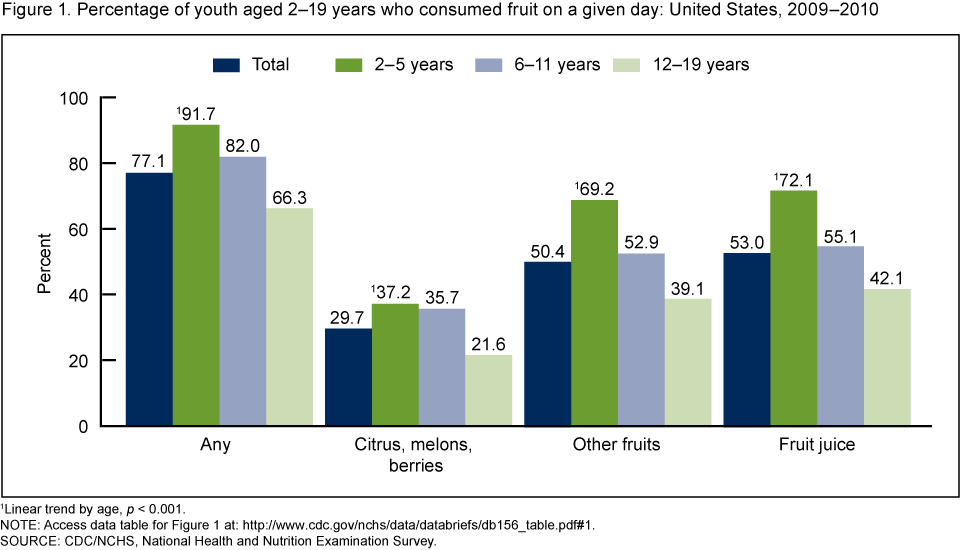A new study just released by the CDC* show that children are still not getting enough fruits and vegetables but are moving in the right direction.
These results show that a high percentage of kids do eat at least some fruits and vegetables on a given day. However, about one-quarter of children did not consume any fruit on a given day. Less than 10% of children did not consume any vegetables on a given day.
Vegetable Consumption for children 2-19 years old:
Almost 92% of youth aged 2–19 years consumed any vegetables on a given day in 2009–2010. More than 11% consumed dark green vegetables, 75.1% consumed red and/or orange vegetables, 53.0% consumed starchy vegetables, and 60.1% consumed other vegetables.
Dark green leafy vegetables are so important for a healthy diet. This is an area that really needs improvement with children and families. Counting a potato alone as getting their vegetable intake is not enough. Children need all four types of vegetables for a well balanced diet.

Vegetable definitions*:
Dark green vegetables include arugula, basil, beet greens, bitter melon leaves, broccoli, Chinese cabbage (pak choi), chrysanthemum garland, chard, cilantro, collards, cress, dandelion greens, kale, lambsquarters, lettuce (Boston, butterhead, cos, romaine, green leaf, and red leaf), mustard cabbage, mustard greens, parsley, poke greens, recaito (Puerto Rican little coriander), spinach, turnip greens, and watercress
Red and orange vegetables include calabazas (Spanish pumpkin), carrots, red chili peppers, red or orange bell peppers, pimentos, pumpkins, squash (most winter types), sweet potatoes, and tomatoes
Starchy vegetables include breadfruit, burdock, cassava (yuca blanca), corn, lima beans, immature peas (e.g., cowpeas, black-eyed peas, green peas, and pigeon peas), jicama or yambeans, plantain, poi, white potatoes, salsify, tapioca, taro, water chestnuts, and yams
Other vegetables include artichokes, asparagus, avocados, bamboo shoots, beans (green and string), bean sprouts, beets, bitter melons (bitter gourd and balsam pear), broccoflower, Brussels sprouts, cabbage (green, red, and savoy), cactus (nopales), cauliflower, celeriac, celery, chayote or christophine, chives, cucumber, eggplant, fennel bulb, garlic, ginger root, kohlrabi, leeks, lettuce (iceberg and others not included under dark green category), luffa (Chinese okra), mushrooms, okra, olives, onions, peppers (chili and bell types that are not red or orange in color), radicchio, sprouted beans (e.g., sprouted mung beans), radishes, rutabagas, squash (summer), snow peas, tomatillos, turnips, and winter melons (5).

9 out of 10 consumed vegetables.

0 Comments